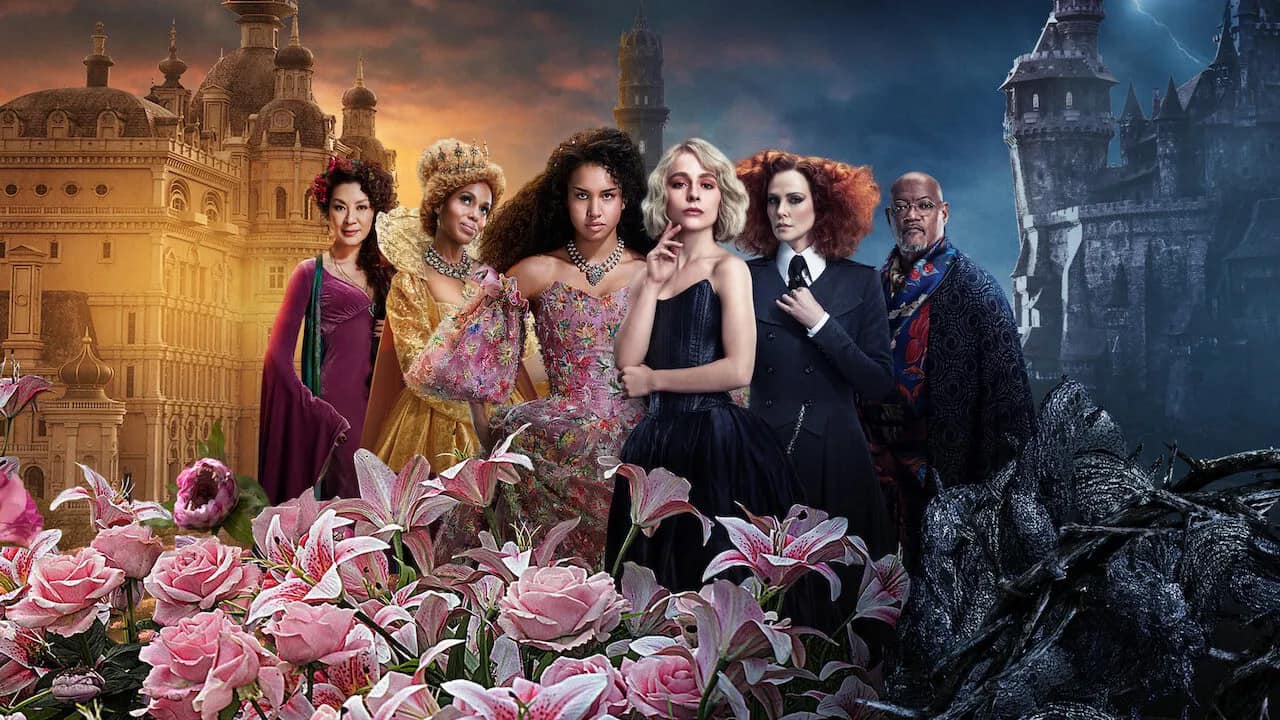
Film Critic Ilina Jha reviews Netflix’s The School for Good and Evil, finding that it does not quite live up to its potential
The School for Good and Evil (2022) adapts the first book of Soman Chainani’s series of the same name. Sophie (Sophia Anne Caruso) struggles with the loss of her mother and her poor relationship with her stepmother. Her best friend Agatha (Sofia Wylie) is ostracised by the society of Galvadon and called a ‘witch’, with Sophie being the only one to defend her. They learn about the legend of the School for Good and Evil, which trains the heroes and villains of fairy tales. Agatha scoffs at the very idea, but Sophie, who adores fairy tales, longs to be selected for the School for Good. When the two girls are taken away, Sophie is delighted at the prospect of her dream coming true.
However, dream quickly turns to nightmare when she is placed in the School for Evil, while Agatha is unwillingly placed in the School for Good. Whilst Sophie is desperate to move Schools, Agatha longs to return home. As they are forced to survive in their new environments, both girls soon have bigger problems to contend with: An evil force has a plan for Sophie, and she starts to think that embracing Evil might not be such a bad idea after all. Needless to say, the premise is intriguing. This, along with the trailer, gave me high expectations. Unfortunately, these they were not entirely met.

The performances of leading ladies Caruso and Wylie are excellent. Caruso superbly portrays Sophie’s transformation from a scared and desperate girl to the sassy star of the School for Evil. Her range of mannerisms and expressions enhance her performance. Wylie brilliantly portrays the way in which Agatha is perpetually bullied and consistently out of place. Agatha combines cleverness and sarcasm with a true care for others that underlines why she is chosen for the School for Good. Performances from the supporting cast are strong, and the casting as a whole is refreshingly diverse.
the visual production and effects excellently convey the traditional ideas and tropes about good and evil that characterise the two schools
While it seems rather cliché to equate Good with light, beauty, and flowers, and Evil with darkness, ugliness, and disgusting creatures, such binary distinctions are precisely the point in this fairy tale world. It is the very ‘rules’ governing each school that Agatha’s so sceptical of. With bold colour and design, the visual production and effects excellently convey the traditional ideas and tropes about good and evil that characterise the two schools. The costume and makeup teams also excel in this respect; in particular, Sophie’s ‘evil’ costumes and looks are striking and very memorable. The editing of this film is also well done.
One of the strengths of the plot is undoubtedly its girl power. Agatha refuses to conform to traditional fairy tale gender roles, repeatedly acting to save both male and female characters throughout the film. Additionally, the importance given to Agatha’s and Sophie’s friendship, and how it prevails no matter what, is poignant. The story is dynamic and intriguing – audiences are always wondering what is going to happen next, and what will become of Sophie and Agatha. The film asks us to consider what makes someone truly good and what makes someone truly evil – and whether anyone is really truly either.
The film asks us to consider what makes someone truly good and what makes someone truly evil – and whether anyone is really truly either
In many ways, the plot is disappointingly weak. Some plot points are too quickly glossed over and forgotten – for example, the troubling nature of what happens to those who ‘fail’ the School for Good is explored for a while (and Agatha’s perception of this is particularly striking), but then seems rather swiftly forgotten when other elements of the plot take over. The temptations for Sophie to become evil, while convincing in themselves, are so rushed that they make her evil transformation somewhat unconvincing. The climax of the film is built up and delivered well, but its resolution is underdeveloped and rushed.
Verdict
Essentially, this story needed much more time to develop. We needed more time for us to see the development of Agatha’s magical powers, more time for Sophie’s shift into Evil, and more time for a proper interrogation into the failings of both Schools. The film has a long running time of 2 hours and 27 minutes, and yet this still isn’t enough for the development of the story. It’s a shame as this film, while an enjoyable watch, is let down by its lack of development suggesting that perhaps a series would have been a more suitable format to allow The School for Good and Evil to reach its full potential.
Rating: 6/10
The School for Good and Evil is streaming now on Netflix
For more on recent streaming releases, check out these articles from Redbrick Film:
Comments